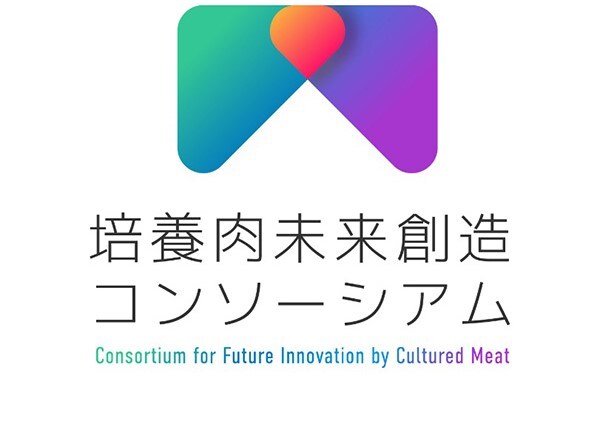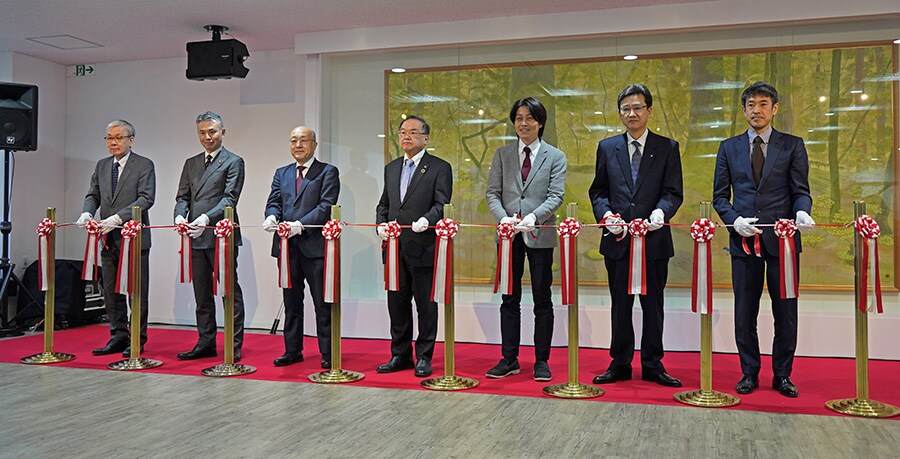Cultured Meat, a New Style of Food Shaping the Future
What flavors spring to mind when you hear “cultured meat”? In the near future, you can try it and check your answer.
We are expected to face a lack of meat and other proteins to maintain the world’s population by 2030. Also, the large amount of greenhouse gases released during the production process in the animal husbandry industry has become an issue. As a solution to these food provisions and environmental problems, cultured meat is now a focus of interest.

Cultured Meat (Provided by Osaka University)
Cultivating Meat Cells
Cultured meat is one type of meat alternative, created by cultivating cells collected from animals. It is different from other meat substitutes such as the one based on processed soybeans or insects in terms of the method to make it, as it is created by cultivating cells.
Cultured meat, which requires neither farms nor animal feed, reduces the greenhouse gases generated during the production process, so it lessens the load on the environment in comparison with animal husbandry. It is produced in a clean lab, so the risk of food poisoning and infections is reduced. It has advantages from various perspectives including the global environment and food safety.
From Mincemeat to a Japanese Wagyu Beef Steak
At present, research and development are progressing throughout the world toward the realization of cultured meat. However, there are major technical difficulties, and most of the cultured meat is sold in the form of mincemeat. In this context, 3D bioprinting technology developed by Professor Michiya Matsusaki of the Division of Applied Chemistry in the Graduate School of Engineering, Osaka University, is a focus of international interest as a technique for creating cultured meat that is closer to real meat.
In this technique, cells collected from the muscles, fat, and blood vessels of animals are cultivated respectively. Each tissue is bundled up and integrates in the same arrangement as in actual meat. Meats can be freely designed with any mixture of lean meat and fat, something that has been difficult to date, and it is even possible to reproduce the “Shimofuri” marbling pattern created by fat incorporated within lean meat.


Since 2021, Shimadzu together with the Graduate School of Engineering, Osaka University (hereafter Osaka University) has been involved in the development of the world’s first instrument for automating the process of bundling fibrous tissues of muscle, fat, and blood vessels with 3D bioprinting technology to form a steak. In March 2023, Osaka University, Itoham Yonekyu Holdings, Inc., Toppan Inc., and SIGMAXYZ Holdings Inc. established the Consortium for Future Innovation by Cultured Meat. The aim is to cooperate in crossing industry boundaries to popularize delicious and safe cultured meat.

Sketch of the Instrument at the Development Stage (by Shimadzu)
In this consortium, Shimadzu provides technology for automating and heightening the efficiency of the cell cultivation process such as special culture media for cultured meat and solutions for evaluating culture media. For example, checking whether there are sufficient nutrients in the culture medium, and how the cells metabolize it, is being applied to research into more efficient cultivation methods.
Several issues remain as cultured meat is a new food product. Regulatory systems for the production process and ingredient labeling are still being argued, and transportation systems to deliver cultured meat to stores need to be established. To bring cultured meat to the dinner table, cooperation between universities, research agencies, manufacturers, and distribution companies is indispensable.
The World’s First Automated Cultured Meat Manufacturing Instrument
Automated Cultured Meat Manufacturing Instrument (Prototype)
Here, we look at the prototype that Shimadzu is developing. This is the world’s first instrument to automatically manufacture cultured meat!
This instrument can automate the production of layering the cell fibers. It can significantly speed up what has so far been a manual process, dramatically increasing the speed of cultured meat production.
The Consortium for Future Innovation by Cultured Meat plans to have an exhibit on the theme of cultured meat at the Nest for Reborn Osaka Health Care Pavilion at Osaka, Kansai, Japan Expo 2025. A food-tasting event for cultured meat is also being discussed.
From Cultivation to Taste Evaluation
While research is continuing into the mass production of cultured meat, Shimadzu’s goal is to create tasty cultured meat as close as possible to Wagyu beef. Shimadzu also has solutions related to how the food tastes.

Sequence of Automated Cultured Meat Production, and the Solutions Provided by Shimadzu
For example, Shimadzu provides small bench-top testing machines for quantifying food texture including the tenderness and chewiness of cultured meat; liquid chromatographs (LC) and liquid chromatograph mass spectrometers (LC-MS) for measuring the types and amounts of amino acids, vitamins, and other taste-related ingredients; and gas chromatograph mass spectrometers (GC-MS) for measuring the types and amounts of ingredients responsible for aroma and flavor. The deliciousness of cultured meat is being evaluated using a variety of approaches.
In the future, as technological developments progress, it will become possible to adjust the ingredients of the meat produced to suit individual tastes and health profiles. We are likely entering an era in which the balance of fat and lean meat of delicious Wagyu beef is customized to our liking.
Related Links
- Osaka University, Shimadzu, Itoham Yonekyu, Toppan, and SIGMAXYZ have established “Consortium for Future Innovation by Cultured Meat” Centers for research promotion are located at Osaka University. | News & Notices
- Osaka University, Shimadzu, and SIGMAXYZ Collaborate on 3D Bioprinting Technology ~Accelerating technological development to solve social issues such as the environment, food, and health~ | News & Notices
 Page Title and URL Copied.
Page Title and URL Copied.


